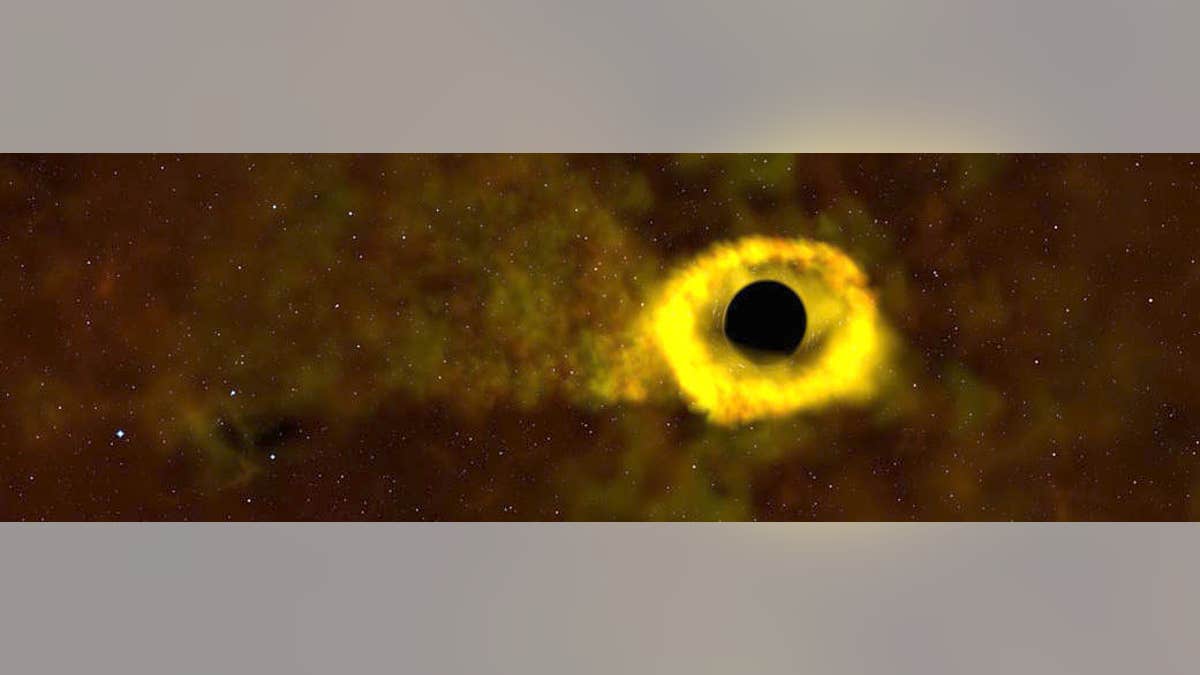Fox News Flash top headlines for Sept. 26
Fox News Flash top headlines for Sept. 26 are here. Check out what's clicking on Foxnews.com
A ‘star-shredding’ black hole has been spotted for the first time by NASA’s Transiting Exoplanet Survey Satellite (TESS).
“TESS data let us see exactly when this destructive event, named ASASSN-19bt, started to get brighter, which we’ve never been able to do before,” said Thomas Holoien, a Carnegie Fellow at the Carnegie Observatories in Pasadena, Calif., in a statement.
'DRAMATIC' BLACK HOLES STUN SCIENTISTS AS 'WIMPY' GALAXIES QUICKLY TRANSFORM INTO 'RAVENOUS' QUASARS

Illustration of a "star-shredding" black hole from a NASA animation. (NASA's Goddard Space Flight Center)
The black hole that generated ASASSN-19bt is at the center of a galaxy located 375-million light-years away. A light-year, which measures distance in space, equals 6 trillion miles.
The research is published in the Astrophysical Journal.
BLACK HOLE DEVOURING A NEUTRON STAR CAUSED RIPPLES IN SPACE AND TIME, SCIENTISTS SAY
Scientists have been gaining plenty of new insight into black holes. In a separate project, astronomers recently announced that they have spotted “dramatic” black holes in six galaxies, which could shed new light on galactic evolution.
Experts also recently announced that a black hole swallowing a neutron star has likely been detected for the first time.
CLICK HERE TO GET THE FOX NEWS APP
In another project, scientists released the first-ever image of a black hole earlier this year, revealing the distant object in stunning detail.
Follow James Rogers on Twitter @jamesjrogers





















